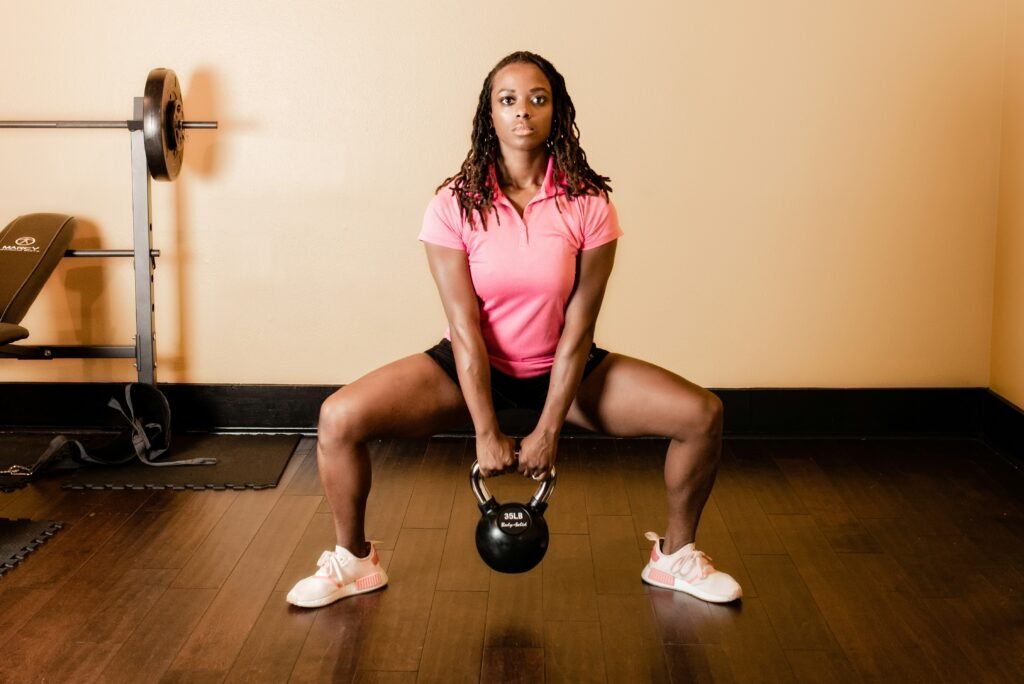Are You Neglecting Two Vital Components of Fitness?
Have you ever considered the importance of balance and coordination in your fitness routine? These two components are often overlooked, yet they play a crucial role in your overall health and well-being. In this article, we will delve into the significance of balance and coordination, their impact on your daily life, and how you can improve them through targeted exercises and activities. Let’s explore why these forgotten fitness components are essential for a well-rounded and effective workout regimen.
Understanding the Importance of Balance
Balancing is not just about being able to stand on one leg. It is a fundamental skill that allows you to maintain stability and control of your body during various movements and activities. Good balance can prevent falls, improve posture, and enhance athletic performance. Neglecting balance training can lead to muscle imbalances, joint instability, and an increased risk of injury. By incorporating balance exercises into your fitness routine, you can improve your overall strength, coordination, and proprioception.
Enhancing Your Coordination Skills
Coordination involves the ability to perform smooth and controlled movements using different parts of your body. It is vital for activities that require precise motor skills, such as sports, dancing, and playing musical instruments. Poor coordination can affect your daily tasks, reaction time, and overall performance in physical activities. By focusing on coordination training, you can enhance your agility, reaction time, and spatial awareness.
The Connection Between Balance and Coordination
Balance and coordination are closely intertwined – one cannot exist without the other. To maintain good balance, you need precise coordination of your muscles and joints to control your body’s movements. Similarly, strong coordination skills are essential for executing balance exercises effectively. By working on both components simultaneously, you can improve your overall body control, movement efficiency, and functional fitness.
How to Assess Your Balance and Coordination Levels
Before you start incorporating balance and coordination exercises into your fitness routine, it is essential to assess your current abilities. This will help you determine your strengths and weaknesses, set realistic goals, and track your progress over time. Here are some simple tests you can perform to evaluate your balance and coordination levels:
1. Single Leg Stance Test
Stand on one leg for 30 seconds with your eyes closed. Repeat the test on the other leg. A strong sense of balance allows you to maintain your posture without wobbling or opening your eyes. This test assesses your proprioception and core stability.
2. Tandem Walk
Walk in a straight line with one foot in front of the other, placing the heel of one foot against the toes of the other. Keep your arms relaxed by your sides and take steady steps without losing balance. This test evaluates your coordination and gait stability.
3. Stork Stand
Stand on one leg with your knee bent and your other foot lifted slightly off the ground. Hold this position for 30 seconds while maintaining your balance. Switch to the other leg and repeat the test. This exercise tests your stability, hip strength, and ankle mobility.
4. Catch and Throw
Toss a small object, such as a ball or beanbag, back and forth between your hands while standing in place. Focus on catching and throwing with precision and control. This test assesses your hand-eye coordination and reaction time.
By performing these simple tests, you can get a clear picture of your current balance and coordination abilities. Keep in mind that these assessments are not meant to be competitive but rather informative and educational. Use them as a starting point to identify areas for improvement and tailor your training program accordingly.

Strategies for Improving Your Balance and Coordination
Now that you have assessed your balance and coordination levels, it is time to focus on improving these two vital fitness components. Incorporating specific exercises and activities into your workout routine can help you enhance your stability, control, and movement patterns. Here are some strategies to help you boost your balance and coordination skills effectively:
1. Standing Balance Exercises
Start with simple standing balance exercises, such as:
- Single Leg Balance: Stand on one leg for 30-60 seconds, focusing on keeping your body upright and stable.
- Bosu Ball Balance: Stand on a Bosu ball with one or both feet, stabilizing your body and engaging your core muscles.
- Chair Pose: Sit back into a chair position with your arms extended overhead, challenging your balance and lower body strength.
These exercises help improve your proprioception, core stability, and leg strength, enhancing your overall balance and posture.
2. Dynamic Balance Drills
Incorporate dynamic movements into your balance training, such as:
- Lunges: Perform forward, side, and reverse lunges to challenge your balance and stability.
- Single Leg Deadlifts: Hinge at your hips and lift one leg behind you while keeping your back straight and engaging your core.
- Standing Leg Swings: Swing one leg forward and backward while standing on the other leg to improve your balance and hip mobility.
Dynamic balance drills enhance your coordination, agility, and muscle control, preparing you for a variety of physical activities and sports.
3. Coordination Challenges
Engage in coordination exercises and challenges to improve your motor skills, such as:
- Cone Drills: Set up a series of cones or markers and move around them quickly while maintaining balance and control.
- Speed Ladder Drills: Perform fast footwork patterns in a speed ladder to enhance your agility and coordination.
- Jump Rope: Jump rope with different footwork patterns and rhythms to improve your coordination and timing.
Coordination challenges stimulate your brain-body connection, sharpening your reflexes, and fine-tuning your movement patterns.
4. Incorporate Functional Movements
Integrate functional movements into your workouts that mimic daily activities and sports-specific skills, such as:
- Squat to Stand: Squat down, then stand up while reaching overhead to improve your squat mechanics and overhead mobility.
- Medicine Ball Throws: Perform overhead and rotational medicine ball throws to enhance your power, coordination, and full-body strength.
- Balance Beam Walk: Walk across a balance beam or curb to challenge your balance, spatial awareness, and gait stability.
Functional movements improve your body awareness, movement efficiency, and overall functional fitness, making you more resilient in various physical tasks.
5. Progressively Challenge Yourself
Gradually increase the difficulty and intensity of your balance and coordination exercises as you become more proficient and confident. Add variations, resistance, or unstable surfaces to challenge your stability, proprioception, and neuromuscular control further. Keep a record of your progress, set new goals, and celebrate your achievements along the way.
By following these strategies and incorporating a variety of balance and coordination exercises into your fitness routine, you can enhance your physical performance, reduce the risk of injury, and improve your overall quality of life. Remember to be patient, consistent, and mindful of your body’s feedback as you work on developing your balance and coordination skills.

The Benefits of Improving Your Balance and Coordination
Investing time and effort in improving your balance and coordination can yield numerous benefits that extend beyond the gym. These two essential fitness components have a profound impact on your daily life, physical abilities, and mental well-being. Here are some key benefits of enhancing your balance and coordination skills:
1. Injury Prevention
By improving your balance and coordination, you can reduce the risk of falls, slips, and other accidents that may lead to injuries. Strong balance and coordination help you maintain stability, react quickly to unexpected movements, and protect your joints from unnecessary stress. Investing in injury prevention through targeted exercises can help you stay active, healthy, and injury-free in the long run.
2. Enhanced Athletic Performance
Athletes and fitness enthusiasts can benefit significantly from better balance and coordination. These skills are crucial for sports that require agility, precision, and quick reflexes, such as gymnastics, martial arts, and basketball. Improved balance and coordination can enhance your speed, agility, and power, giving you a competitive edge in your chosen sport or physical activity.
3. Functional Fitness
Balance and coordination are essential for performing everyday tasks, such as walking, climbing stairs, and carrying groceries. By honing these skills through purposeful exercises, you can improve your movement patterns, body mechanics, and postural alignment. Functional fitness allows you to move with ease, efficiency, and confidence in various situations, enhancing your overall quality of life.
4. Cognitive Health
Engaging in balance and coordination activities stimulates your brain-body connection, promoting cognitive health and motor skill development. By challenging your coordination and balance, you activate different brain regions involved in movement control, spatial awareness, and proprioception. Improving your cognitive health through physical activities can enhance your memory, focus, and overall brain function as you age.
5. Postural Support
Good balance and coordination play a vital role in maintaining proper posture and spinal alignment. Strong core muscles, stable joints, and coordinated movements help you avoid slouching, back pain, and muscular imbalances. By focusing on exercises that enhance your postural support, you can alleviate discomfort, improve your alignment, and move with grace and poise.
6. Confidence and Self-Esteem
As you progress in your balance and coordination training, you may notice improvements in your physical abilities, coordination, and body awareness. These positive changes can boost your confidence, self-esteem, and sense of accomplishment. Feeling more secure in your movements, balance, and coordination can translate into a higher level of confidence in various aspects of your life, from social interactions to pursuing new challenges and opportunities.
Investing time and effort in improving your balance and coordination skills is a valuable endeavor that can enrich your fitness journey and enhance your overall well-being. By recognizing the importance of these forgotten fitness components and incorporating targeted exercises into your routine, you can unlock a myriad of benefits that will support your health, performance, and longevity in the long term.

Conclusion
In conclusion, balance and coordination are often overlooked but essential components of fitness that play a significant role in your overall health and physical abilities. By understanding the importance of balance and coordination, assessing your current levels, and implementing targeted strategies to improve these skills, you can enhance your performance, prevent injuries, and elevate your quality of life. Remember to challenge yourself, track your progress, and celebrate your achievements as you work on developing your balance and coordination skills. Embrace the journey of enhancing these vital fitness components, and reap the countless benefits that come with a balanced and coordinated body and mind.